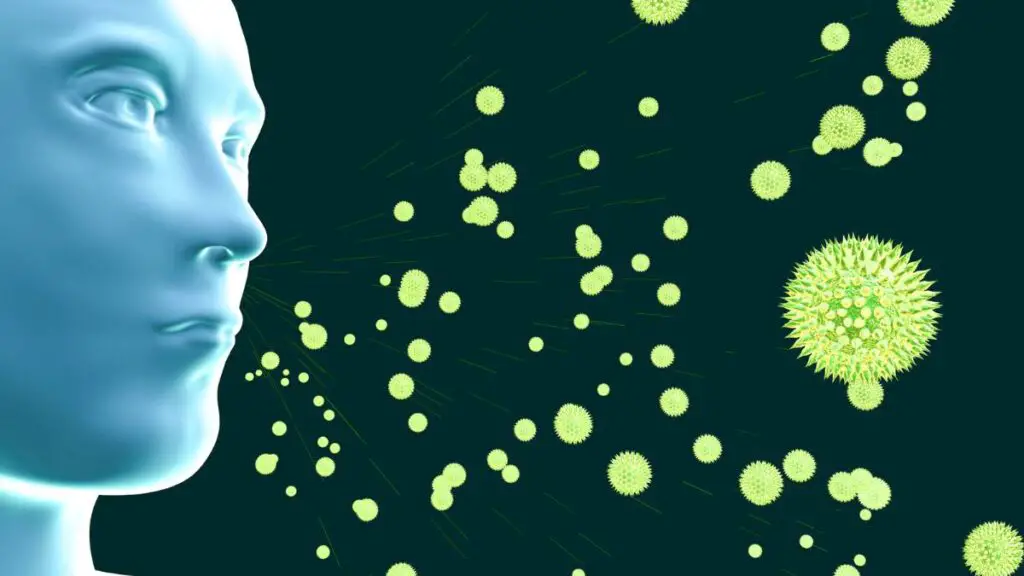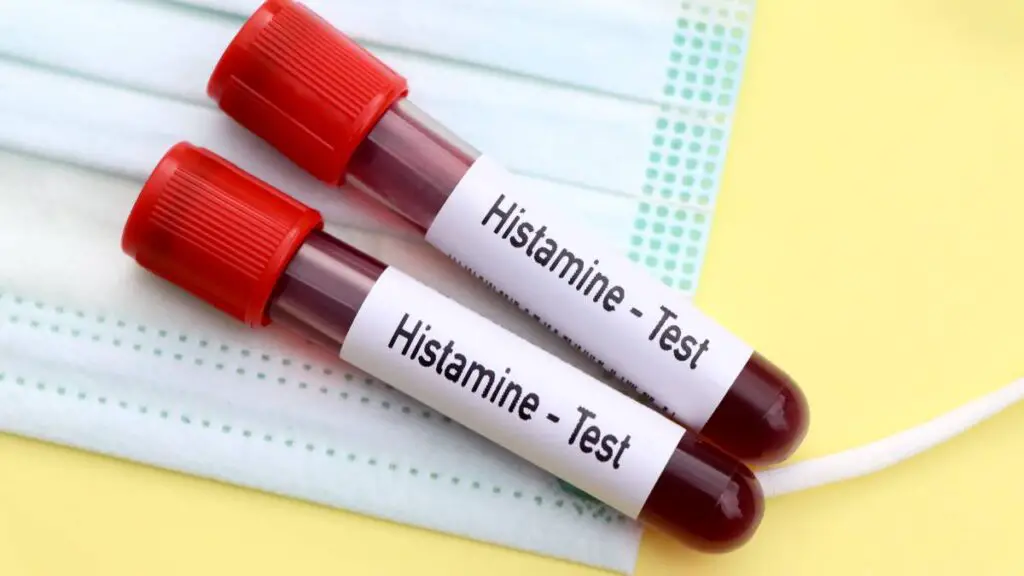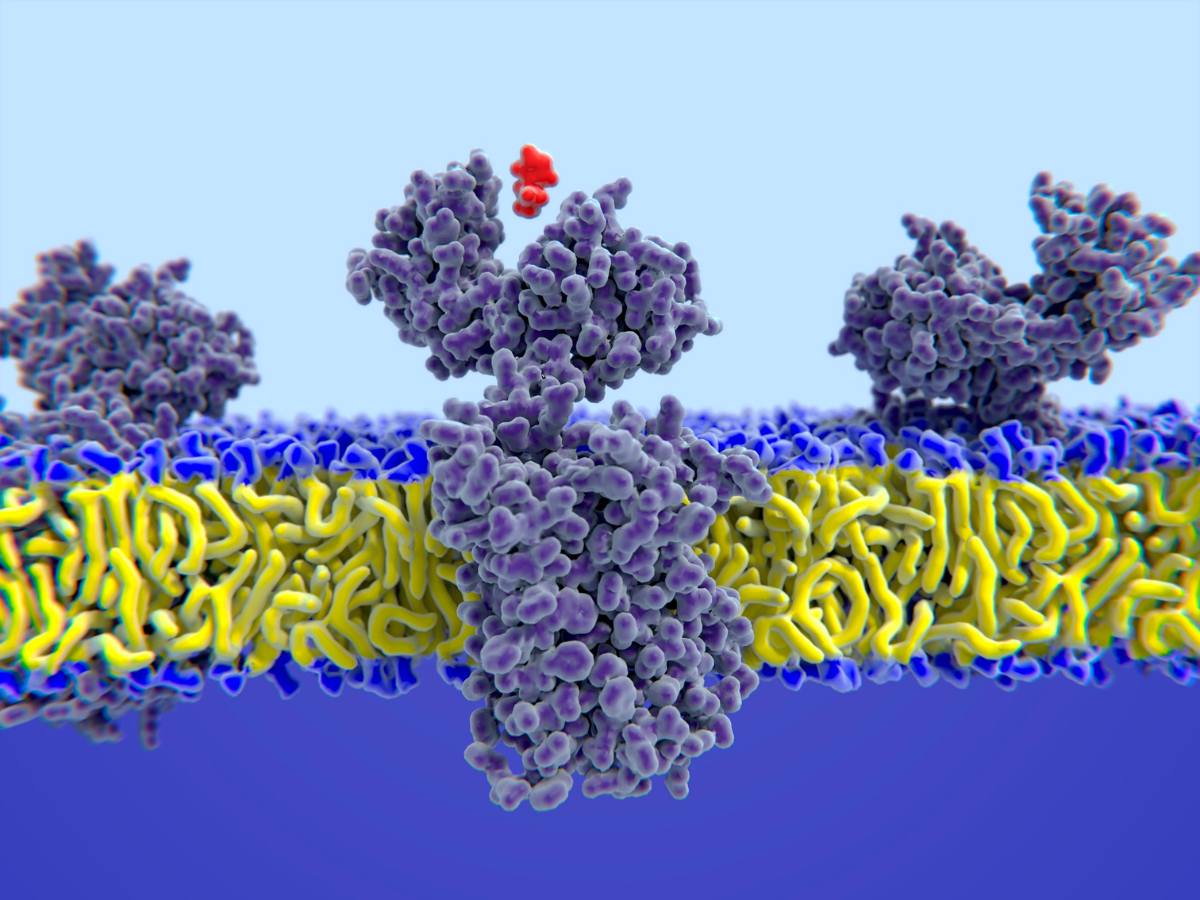Have you ever experienced an itchy, flushed feeling when you have an allergic reaction or get a mosquito bite? Or the runny nose and watery eyes when you’re dealing with seasonal allergies or a cold? There’s a sneaky molecule behind those unpleasant symptoms – histamine.
You can think of histamine as that one enthusiastic band member who gets a bit carried away during a performance. At normal levels, histamine helps coordinate essential processes like immune responses, digestion, and wakefulness. (1) But when there’s too much histamine around, it can cause unpleasant symptoms. This is what we see with histamine intolerance.
High Histamine Comes from an Imbalance in Histamine Production and Breakdown
Histamine is more than just the nasty molecule that makes you miserable during allergy season. It’s a multitasking whiz with several starring roles keeping your body running smoothly.
Histamine is like a messenger, signaling important stuff is happening in areas like your gut, immune system, and brain. You can think of it as your body’s way of saying “Hey! This is important – pay attention!”
But don’t worry, histamine knows when to make an entrance and when to leave the stage. You release it as a warning, as a heads up when your body senses danger, like an allergen or infection. This triggers reactions like more stomach acid to help you digest or the infamous allergy itch.
After the threat passes, helper enzymes like DAO (6) and HNMT usher histamine away so your body calms back down. (2)
It’s all about balance – too much histamine circulating in your system can lead to misery, as can the inability to break it down quickly enough. Understanding this delicate dance is key. An overactive histamine response or poor breakdown causes an array of annoying symptoms.
When you have histamine intolerance, you have problems breaking histamine down and eliminating it. So, you experience the symptoms of high histamine.
Let’s respect histamine’s dual nature – its role as an unsung hero (that regulates your immune system and digestion) and a potential troublemaker when you have too much of it.

Factors That Contribute to Increased Histamine Levels
Food and Drink Sources of Histamine
Fermented foods like sauerkraut, kombucha, and aged cheeses (4) contain high levels of histamine. So do processed and cured meats like salami. For some people, enjoying these foods sparingly is fine. But eating too much can be a recipe for disaster if you’re prone to histamine intolerance.
Alcohol and other fermented drinks also boost your body’s histamine levels and can trigger histamine intolerance symptoms.(3)
Environmental Histamine Triggers
Outdoor allergens like pollen or indoor irritants like dust mites can overstimulate the immune system. (5)The body responds by churning out more histamine. Even big swings in temperature or humidity levels can sometimes trigger a histamine spike.
Genetics of Histamine Intolerance
Scientists have identified genes that code for enzymes that break down histamine, like DAO (6) and HNMT. People who have mutations in these genes tend to have higher baseline histamine levels, making them more likely to react to triggers.
So, environment and genetics all play a role in determining how much histamine your body produces and handles. Identifying your personal triggers is key to preventing histamine overload and enjoying an in-tune system!
Histamine Intolerance and High Histamine Triggers a Range of Symptoms
What are the symptoms of high histamine? Too much histamine puts on quite the performance in your body! First it makes a splashy entrance on your skin – get ready for the triple threat of itching, hives, and redness. And it potentially has supporting roles in conditions like eczema and psoriasis too.
Next histamine storms onto the digestive stage, bringing tummy pains, bloating, and diarrhea with it. (7) It’s even tied to irritable bowel syndrome (IBS), highlighting its complex relationship with gut health.
Histamine also extends its reach into your respiratory tract, causing annoying symptoms like sneezing, congestion, and trouble breathing associated with allergies and asthma.
It then weasels its way into your nervous system as well, triggering those awful headaches and migraines. (8) This shows how deeply connected histamine levels are with brain health. Also, find out whether histamine intolerance can cause brain fog.
And histamine doesn’t quit behind the scenes either. Too much of it contributes to exhaustion and mucking with your sleep cycles. Get ready for fatigue and insomnia if histamine runs the show!
So, in summary – too much histamine causes widespread issues on your skin, in your gut, lungs, head, energy levels, and sleep. It’s a problematic performer when uncontrolled.

Symptoms of High Histamine: How Do You Know if You Have Histamine Intolerance
There’s no one slam dunk test for histamine intolerance. Bloodwork to check serum DAO levels is usually the first step. DAO is the enzyme that breaks down histamine in the body, so low levels can mean excess histamine is circulating.
But DAO alone doesn’t always tell the whole story. Some doctors also do a skin prick test to see if histamines cause hives.(9) Or they might look at urine organic acids, checking for high methylhistamine which signals too much histamine in the system.
An elimination diet can also help identify trigger foods. While each test only provides a piece of the puzzle, together they can provide important clues, especially when symptoms match up.
It takes an experienced practitioner to know which tests to order and how to put them all together for an accurate diagnosis. This tricky condition really benefits from a wide lens approach.
Work with a Healthcare Professional Who Understands Histamine Intolerance
So, if you have symptoms of histamine intolerance, it’s important to work with a healthcare professional to get properly tested and diagnosed. While no single test can definitively diagnose histamine intolerance, together they can provide a complete picture.
A knowledgeable practitioner can help determine which tests are most appropriate for your individual case and correctly interpret the results. They can also rule out other potential conditions with overlapping symptoms.
Having an accurate diagnosis will allow you to implement the most effective treatment plan through diet changes, DAO supplements, antihistamines, probiotics, and other targeted interventions.
Ongoing monitoring and adjustment guided by a healthcare professional knowledgeable in histamine intolerance can help provide sustained relief from your symptoms.
Frequently Asked Questions (FAQ)
What are the primary symptoms of histamine intolerance?
Histamine intolerance can manifest in various ways, including itching, hives, redness on the skin, gastrointestinal issues like bloating and diarrhea, respiratory symptoms such as sneezing and congestion, headaches, migraines, fatigue, and disrupted sleep patterns.
How is histamine intolerance diagnosed?
Diagnosing histamine intolerance involves a combination of tests, including assessing serum DAO levels through bloodwork, skin prick tests to observe histamine-induced hives, and urine organic acid analysis to detect elevated methylhistamine levels.
Can genetic factors contribute to histamine intolerance?
Yes, certain genes, namely DAO and HNMT, play a role in histamine breakdown. Mutations in these genes can result in elevated baseline histamine levels, increasing susceptibility to triggers.
What steps can be taken to manage histamine intolerance?
Managing histamine intolerance encompasses dietary modifications, supplements like DAO, antihistamines, and probiotics. Collaborating with a healthcare professional ensures a tailored treatment plan and ongoing monitoring for sustained relief.
References:
- Patel, Raj H, and Shamim S Mohiuddin. “Biochemistry, Histamine.” Nih.gov. StatPearls Publishing, May 2023. https://www.ncbi.nlm.nih.gov/books/NBK557790/.
- van Odijk J, Weisheit A, Arvidsson M, Miron N, Nwaru B, Ekerljung L. The Use of DAO as a Marker for Histamine Intolerance: Measurements and Determinants in a Large Random Population-Based Survey. Nutrients. 2023 Jun 26;15(13):2887. doi: 10.3390/nu15132887. PMID: 37447214; PMCID: PMC10346277. https://pubmed.ncbi.nlm.nih.gov/37447214/
- F. Wantke, M. Götz, Reinhart Jarisch. Histamine‐free diet: treatment of choice for histamine‐induced food intolerance and supporting treatment for chronical headaches. Clinical & Experimental Allergy. 1993;23(12):982-985. doi:https://doi.org/10.1111/j.1365-2222.1993.tb00287.x
- Vale SR, Beatriz M. Determination of Biogenic Amines in Cheese. Journal of AOAC INTERNATIONAL. 1997;80(5):1006-1012. doi:https://doi.org/10.1093/jaoac/80.5.1006
- Haida, M., Suko, M., Okudaira, H., Ito, K., & Miyamoto, T. (1991). [Histamine release test of patients allergic to the house dust mite, Dermatophagoides farinae–analysis according to various clinical backgrounds].. Arerugi = [Allergy], 40 3 Pt 1, 191-204 .
- Kettner L, Seitl I, Fischer L. Toward Oral Supplementation of Diamine Oxidase for the Treatment of Histamine Intolerance. Nutrients. 2022;14(13):2621-2621. doi:https://doi.org/10.3390/nu14132621. https://www.ncbi.nlm.nih.gov/pmc/articles/PMC9268349/
- Götz, M. (1996). [Pseudo-allergies are due to histamine intolerance].. Wiener medizinische Wochenschrift, 146 15, 426-30.
- Min Jung Ku, Silverman BA, Prifti N, Wang Y, Persaud YK, Schneider AT. Prevalence of migraine headaches in patients with allergic rhinitis. Annals of Allergy Asthma & Immunology. 2006;97(2):226-230. doi:https://doi.org/10.1016/s1081-1206(10)60018-x.https://pubmed.ncbi.nlm.nih.gov/16937756/
- Kofler L, Ulmer H, Kofler H. Histamine 50-Skin-Prick Test: A Tool to Diagnose Histamine Intolerance. ISRN Allergy. 2011;2011:1-5. doi:https://doi.org/10.5402/2011/353045. https://pubmed.ncbi.nlm.nih.gov/23724226/

